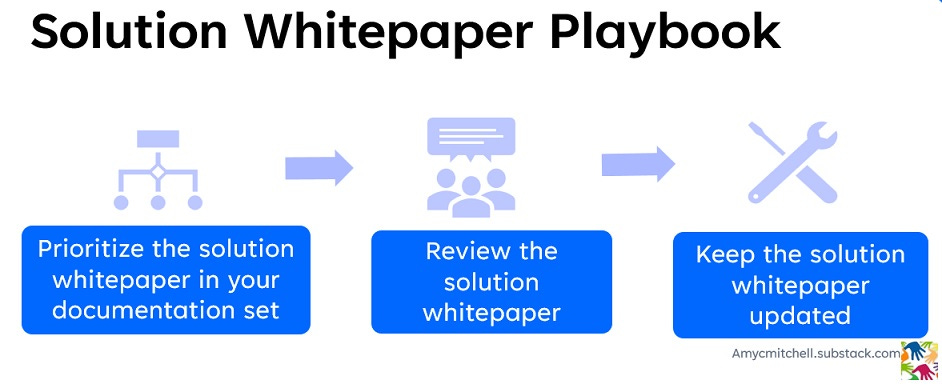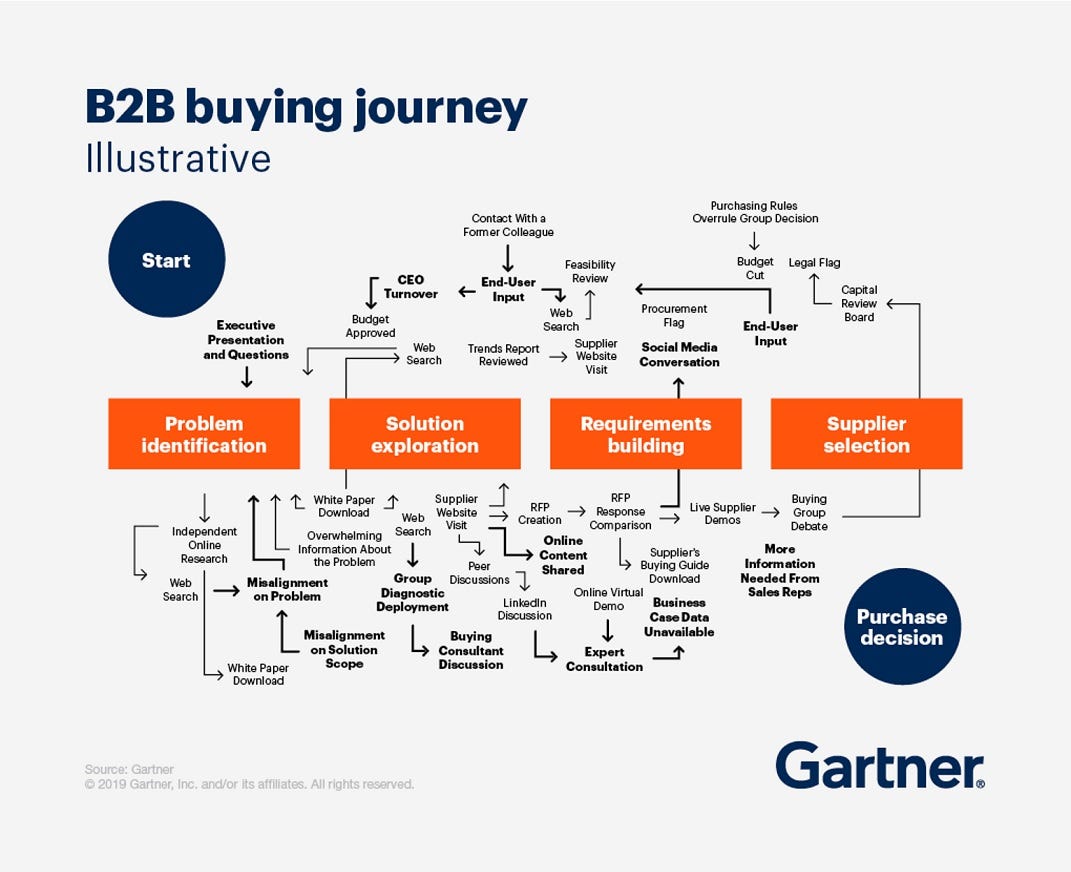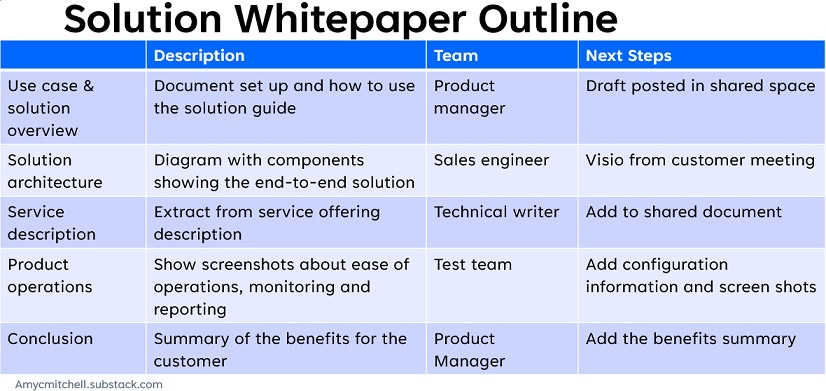You and your sales team are meeting with a potential customer. You've responded well to every objection and the customer wants a follow-up session to dive deep on your solution. As the meeting wraps up, the potential customer asks "Can you provide some whitepapers on this?".
With a sinking heart, you reflect on the status of your product documentation. Unfortunately, you don't have anything to provide to the customer. Actually, your product isn't released yet and there hasn't been time to develop whitepapers yet!
Benefits of Whitepapers
Often customers prefer to do their own research before making a decision to purchase. A solution whitepaper is a good place for potential customers to start their research. The below B2B Buying Journey from Gartner via Vivek Nanda at Fresh Salmon illustrates the typical use of a whitepaper in making a purchase decision:
What can a product manager do to generate a solution whitepaper? As a product manager, you can't take much time away from your other responsibilities to write a whitepaper alone. Though you know enough to write it, it is better to get this done through your product team!
Here are the steps to generate a solution white paper:
Define clear and simple requirements for your documentation hierarchy
Prioritize the specific solution white paper ahead of the rest of the documentation
Compel action on writing the solution white paper
Line up authorized reviewers to approve the solution white paper
Define a plan to maintain the solution white paper
Clear responsibility to keep it up-to-date
Define Documentation Requirements
The first step is to define the requirements for your product and solution. Along with the requirements, you can define the audience that needs the documentation. Here is a typical documentation set for a product:
Audience: users of your product
User guide: product overview, architecture, using the product, troubleshooting
Getting started guide
Release notes: what's new, known issues
Compatibility guide
Audience: developers using your product
SDK Software Developer Kit: integrating with your product, APIs
Audience: internal users
FAQ: Sales enablement
FAQ and how to use: Customer support teams
Audience: potential customers and new customers
Marketing collateral: datasheets, ROI calculators, blog articles
Solution Guides: by customer use case
With this documentation hierarchy, you put priority on the solution guide for the customer use case. Review the proposed documentation set with a focus on the key solution guide. Write detailed requirements for the solution guide including key questions to answer and a rough outline.
Compel Action on the Solution Document
Make your request very specific for the customer use case to multiple teams. Use the sales opportunity to drive some urgency on your request. Find out what each team can do for the document. If you can't get a single person to do the document, then you can work toward getting parts from multiple teams.
Below is an example of a team that you can pull together. You got help from sales, a tech writer, and the test team.
You will need marketing and legal to review the document along with your team that created the document. Since it is a product solution whitepaper, you need a broad review before sending it to potential customers.
Maintain the Solution Whitepaper
Since it was a group effort to accelerate the solution whitepaper, you will need to work out who is responsible to maintain it. The best choices would be the technical writing team or the technical marketing team.
You can consider including the maintenance of the solution whitepaper as one of the release requirements for each product release. This is another way to keep the whitepaper up-to-date.
Conclusion
A solution whitepaper is a powerful tool for showcasing the value of your product solution. A solution whitepaper provides a deep dive into the benefits and use cases for your product solution. By collaborating with your product team, you can take the following steps to generate a solution whitepaper:
Define the documentation hierarchy and put priority on the solution whitepaper
Line up authorized reviewers to ensure the quality and accuracy of the whitepaper
Assign responsibility to keep the whitepaper updated with the latest information
The end result is a compelling whitepaper that educates and influences potential customers on the benefits of your product solution.
Interesting Links
B2B Buyers Journey has Changed Customers are doing increasing amounts of research on products before contacting your sales team. Vivek Nanda breaks down the buyers’ path to your product!
Using innovation when your growth slows Sometimes you need to focus on a great product instead of a constant drive for growth. Tara McMullin discusses how the game we play changes our work.







This inspired me to start writing some whitepapers for some of my products. Thanks for the good tips on getting started!
Great post Amy. It kind of reminds me of the Amazon press release approach a bit. Do you find the content your teams write in this process to be more marketing the solution? Technical? Or varied?